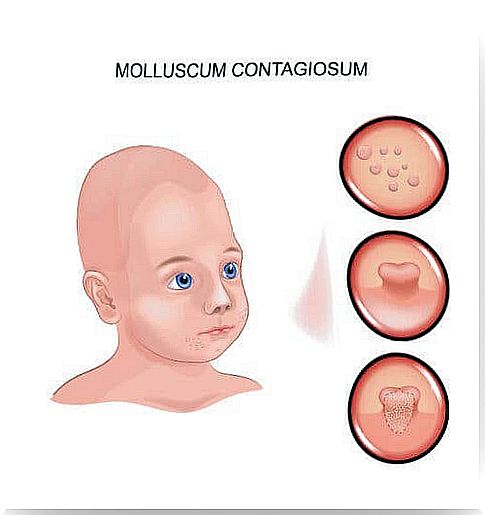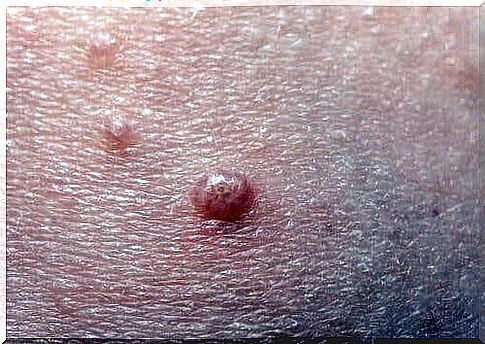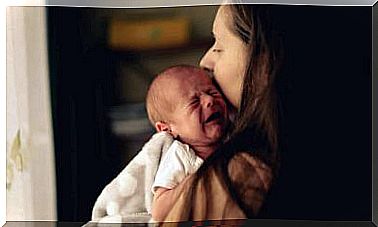What To Do If My Child Has Molluscum Contagiosum?

Molluscum contagiosum is a very common viral infection in children. It produces characteristic lesions on the skin and, despite the time it may last, it is a benign infection. Here, we’ll introduce some details about it and some tips to follow if your child has molluscum contagiosum.
What is molluscum contagiosum?
Molluscum contagiosum or Molluscum is a virus of the poxvirus family. As children’s immune systems are not yet fully mature, they are the population most affected by molluscum contagiosum.
In Europe, this pathology affects up to 5% of children between 2 and 12 years old, so we can say that it is quite common. This virus affects the mucous membranes and the most superficial layers of the skin.
Contagion of contagious molluscs can occur by:
- Direct contact with people who have the disease, in skin-to-skin contact, for example.
- Through objects that were used by people with contagious molluscs and that became infected, such as toys, towels, clothes…
- By extension to other parts of the body of a person who already has lesions with the virus.

What are the symptoms caused by molluscum contagiosum?
This virus causes skin lesions that look like small, round, raised pimples or warts, which contain the virus inside. They can be shiny and sunken in the center and usually appear mostly in areas such as the armpits, elbows or groin. However, they can affect any part of the body.
Molluscum contagiosum lesions may appear alone or in groups. They are usually not painful, but itchy, and it is by scratching the lesion that the virus spreads to other parts of the body. Sometimes, when there is a lot of itchiness and the person scratches a lot, bigger injuries can occur.
How is molluscum contagiosum treated?
As always, it will be necessary to look for a specialist to diagnose this pathology. Usually, no further examination is needed as it can be diagnosed with the naked eye.
As already mentioned, this virus usually causes a benign pathology that, although it can last for months and even years, ends up disappearing, even without any treatment. Still, there are some treatments that can be helpful in getting rid of the infection. Some of them can be:
- Empty the viral content of the lesions by squeezing them with the necessary material.
- Freeze the lesions (cryotherapy).
- There are gels and creams that can be applied, as well as oral treatments in the form of syrup or pills.
It is the doctor who will assess which treatment is the most appropriate for each case or even if it is better to leave it untreated. It all depends on the child, the number of injuries, their extent and the symptoms caused.

What to do if my child has molluscum contagiosum?
If your child has this infection, there are several preventative measures you can take to prevent it from spreading to other people or to prevent it from spreading to the rest of the body. Some of these measures are:
- Avoid touching, scratching or rubbing lesions as much as possible.
- Avoid using the same objects, such as clothes, sheets, towels… by people who are not infected.
- Wash your hands frequently and also keep the injured area clean and dry.
Despite these measures, a child who has molluscum contagious can continue to lead a totally normal life, going out and playing with other children, etc.
If the infection has passed, even after healing, a person can become infected and have the disease again. Therefore, these preventive measures should also be taken by people who have already had it.
In short
Molluscum contagiosum, although frequent, is a benign pathology that usually does not cause complications and ends up disappearing on its own or with the help of some treatment. In case of injuries or symptoms, it is important, as always, to consult a doctor to receive the final diagnosis and to decide what will be the most appropriate treatment.









